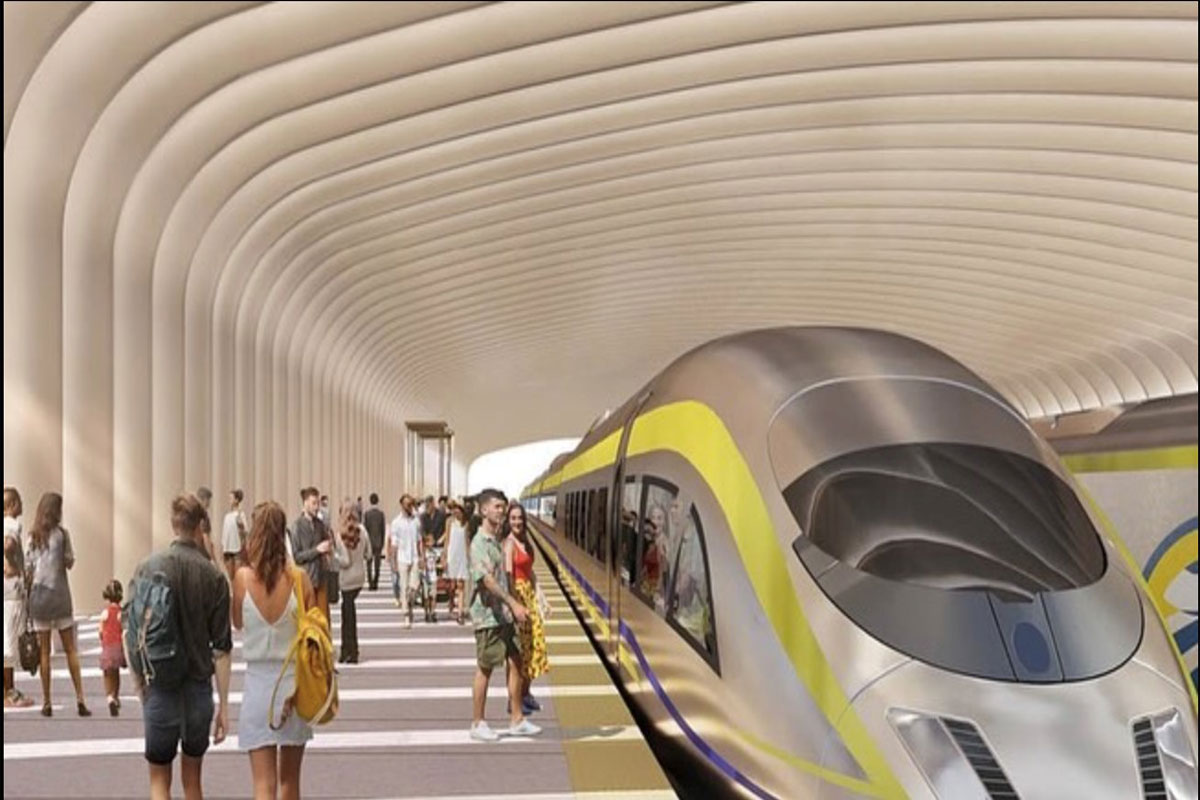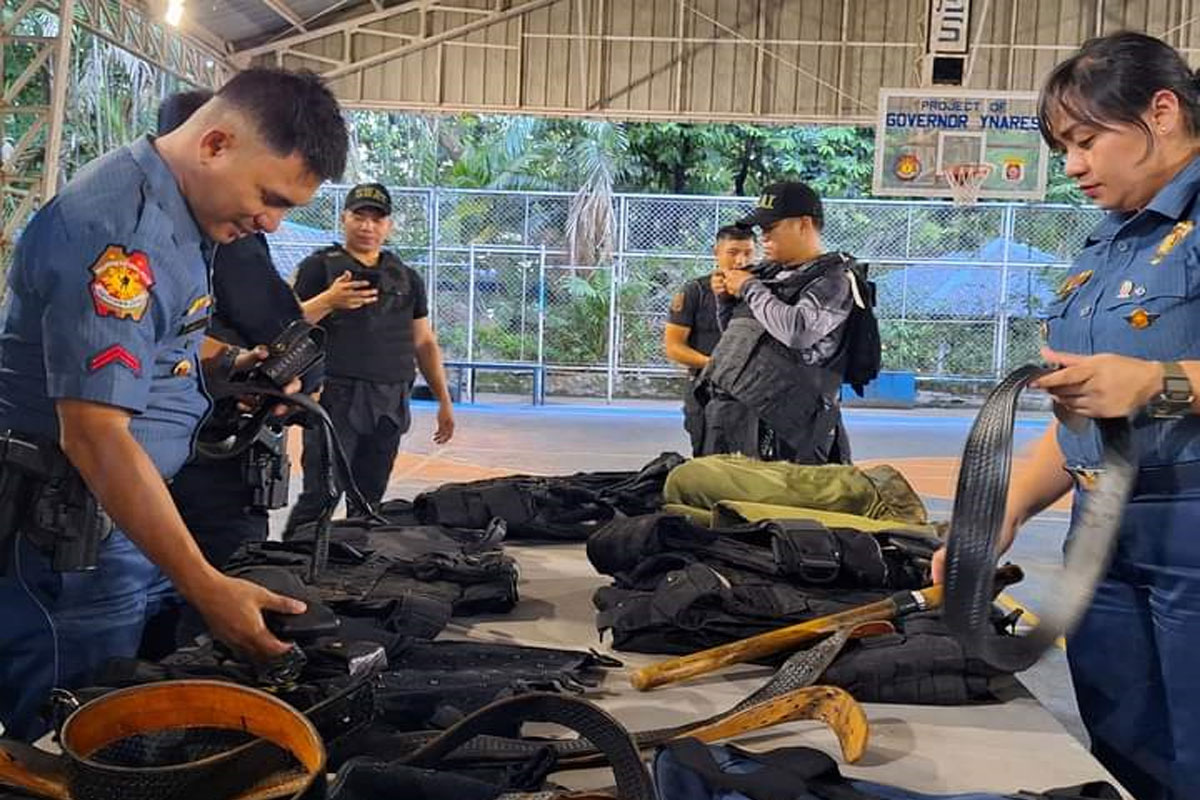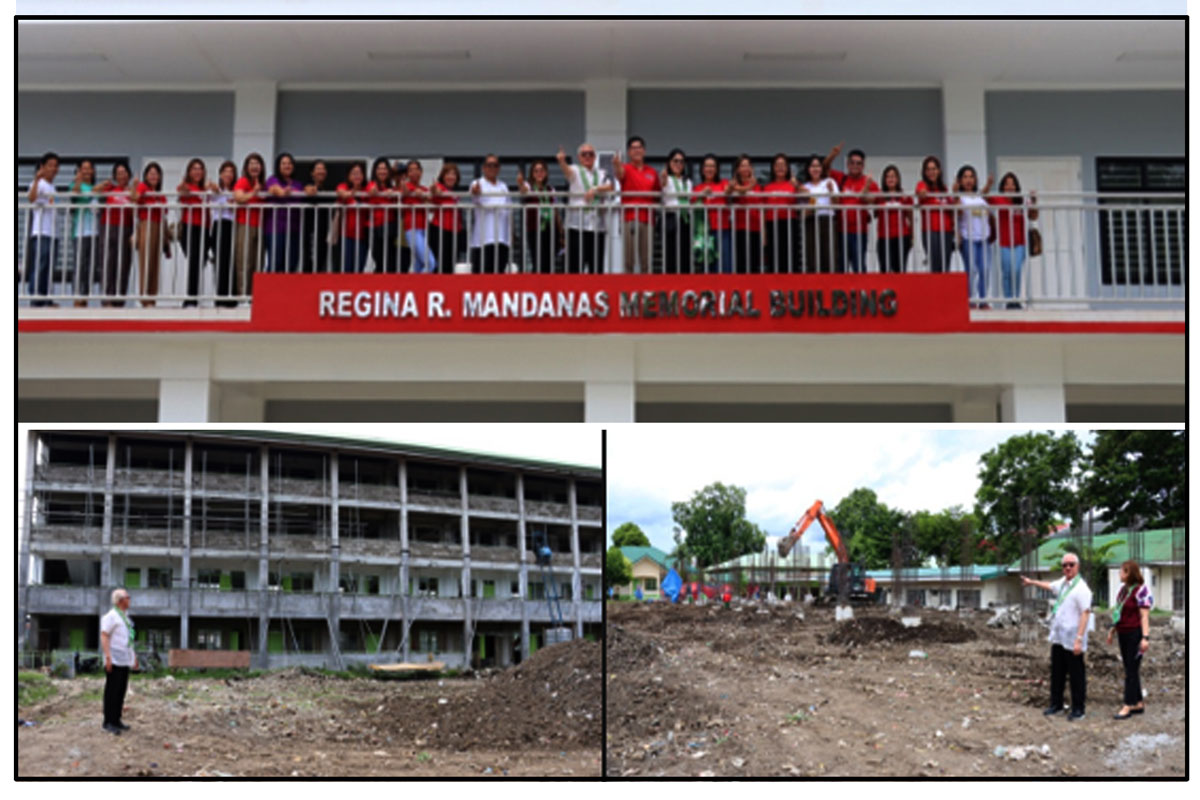
Villafuerte cites PBBM infra buildup in CamSur
CAMARINES Sur Rep. LRay Villafuerte is optimistic that the expansion of the Naga Airport and the speedy completion of flood control projects at the Bicol River Basin (BRB) will finally “see the light of the day” on the Marcos presidency, following the President’s recent directive on an infrastructure buildup in the province and the rest of Bicol on his watch.
“We are optimistic that vital public works that have not seen the light of day despite being declared as priority projects in past Administrations will finally get going under the Marcos presidency, following the President’s directive in his recent—and third—official visit to Camarines Sur on putting them on the front burner this time around,” Villafuerte, a former governor of the province, said.
Villafuerte, National Unity Party (NUP) president, expressed such optimism after President Marcos, during his recent trip to the province to lead the distribution of land titles to nearly 2,000 agrarian reform beneficiaries (ARBs) all over Bicol, announced the start of the new Naga Airport Development Project and directed the completion of the remaining flood control projects at the BRB.
The congressman representing the province’s second legislative district also expressed the hope that the President’ infrastructure buildup in CamSur and the other Bicol provinces will lead to the implementation of one flagship project that was shelved to the back burner in the past government, and this is the proposed “Bicol Express” railway system that will run from the national capital to Albay or Sorsogon.
“We thank the President for giving priority to the improvement of the Naga Airport and the completion of BRB flood control projects as part of his infrastructure buildup program,” Villafuerte said. “I remain hopeful that this infra modernization initiative will lead, too, to the implementation of the ‘Bicol Express’ train line that was unfortunately put on hold in the previous Administration,” Villafuerte said.
During his visit to the province—actually the President’s third official trip to CamSur in just 15 months—Mr. Marcos announced the completion of eight farm-to-market roads (FMRs), among other infrastructure projects in the province.
The President directed the Department of Public Works and Highways (DPWH) to finish its infra projects in the province, and added “Sikapin ninyong tapusin agad ang natitirang flood control projects sa Bicol River para maibsahan ang pag-baha na posibleng idudulot naman ng mukhang susunod na La Niña.”
In his speech, President Marcos also mentioned major road projects like the CamSur Expressway and Pasacao-Balatan Tourism Capital Road, and announced the start of the Naga Airport upgrade.
“Ilan sa kaabang-abang na imprastraktura sa lalawigan ng Camarines Sur ay ang Camarines Sur Expressway, nandiyan din ang Pasacao-Balatan Tourism Coastal Road, at ang sisimulan natin na New Naga Airport Development Project,” he said. “Ito ay mga inaasahang magiging susi nang mas mabilis na transportasyon at mas magiging malagong ekonomiya.”
The President recalled, moreover, in his speech last year’s kick-off in the province of a Kadiwa ng Pangulo outlet, the first in the region; and of a 25-storey low-cost housing project with 10,000 units in Naga City, the first joint venture (JV) of the Department of Human Settlements and Urban Development (DHSUD) with a provincial government under the DHSUD’s Pambansang Pabahay (4PH) Program..
President Marcos visited CamSur for the first time in March 2023 for these Kadiwa and 4H projects, and then came back in September for the nationwide launching in the province of his Bagong Pilipinas Serbisyo Fair (BPSF) caravan.
Villafuerte has long sought the implementation of the long-delayed expansion of the Naga Airport’s runway from the city to CamSur’s provincial capital of Pili, so it can accommodate widebody jets like the Airbus A300 that are good for international flights.
Only small turbo-prop planes like the Bombardier Q400 now land at the Naga Airport.
He recalled that this airport project was already approved by the National Economic and Development Authority (NEDA) during the presidency of the late President Benigno Aquino III, and then identified as a flagship project of the succeeding Duterte government, “but this infrastructure modernization plan unfortunately remained on the drawing board in both administrations.”
“Because the landing field of the Naga Airport is short, it could not accommodate jets like the Airbus A300, and there is always the danger that the smaller planes using this gateway could overshoot the runway,” he said.
“Thus the need for the expansion of the Naga Airport up to Pili to ensure safer plane landings, increase passenger traffic and boost local tourism, given that a much longer landing field would enable the airport to accommodate bigger commercial aircraft or jets,” added Villafuerte.
Villafuerte earlier appealed to Malacañan Palace to revive the defunct BRB Development Program Office (BRBDPO), which was put up a half-century ago to implement the country’s first-ever regional area development initiative that was designed to nurture and climate-proof this over 317,000-hectare watershed in one of the country’s most disaster-prone regions.
He cited the need for the government “to climate-proof the BRB watershed in order to mitigate the impact of future natural disasters on this flood-susceptible region in the Philippines, which is considered the world’s most disaster-prone country and one of the most vulnerable countries to climate change.”
The BRB covers 963 barangays in 50 municipalities and cities in CamSur, Albay and Camarines Norte.
It encompasses eight (8) sub-basins or watersheds, namely, Libmanan-Pulantana, Ragay Hills, Thiris, Naga-Yabo, Pawili River, Waras-Lalo, Naporog and Quinali—all of which are in CamSur.
Villafuerte said a viable solution to chronic flooding in the region is the dredging and desilting of the Bicol River.
“About 70% of the BRB is in CamSur, which is flood-prone Bicol’s lowest-lying province, making it a catch basin for floodwaters from the other provinces whenever tropical storms pummel our region,” he said. “We are thus appealing to Malacañan (Palace) to do something about our chronic flooding problem.”
The BRBDP was put up by President Marcos’ father, the late President Ferdinand Marcos Sr., in 1973 as the country’s first pre-devolution project in regional area development, on the belief that driving the BRB towards its full growth potentials would be a catalyst for the rapid economic development of the entire region, Villafuerte said.
However, then-President Aquino issued Executive Order (EO) No. 374 in October 1989 disposing of or abolishing the BRBDPO along with four other integrated area development offices for Bohol, Mindoro, Samar and Cagayan.
In step with the administrative decentralization thrusts of her Administration, then-President Aquino had transferred the authority and responsibility over these offices to the concerned then-newly reorganized Regional Development Councils (RDCs) and local government units (LGUs).
He had pointed to the then-Duterte administration a 2013 World Bank (WB) study that underscored the importance of dredging the Bicol river, which can be implemented in phases.
Villafuerte said that another delayed flagship project of the DOTr in Bicol is the rollout of the Philippine National Railways-South Long Haul Railway (PNR-SLHR) project.
With the withdrawal of the proposed Chinese funding for this PNR-SLHR project or the “Bicol Express,” Villafuerte hoped the DOTr and the Department of Finance (DOF) could also fast-track negotiations for alternative financing for this rail venture—whether through official development assistance (ODA), Public-Private Partnership (PPP) or a combination of both.
Villafuerte pointed out that the rollout of “Bicol Express,” which would cut travel time by road trip from Manila to the region from about 12 hours to just four hour, would energize economic activity and create a lot more jobs in the region as infrastructure investments have the highest multiplier effect on the economy.
He had proposed to our economic managers to build a Japanese-style “bullet” train in lieu of the traditional rail system that was originally considered to run from the national capital to Bicolandia.
Should Japanese ODA funding become an option for the Bicol Express, he said, “It would be ideal for Tokyo to build a bullet train in lieu of a regular railway system, as envisioned in the original financial negotiations with Beijing during the previous Duterte administration, given Japan’s expertise in this state-of-the-art rail technology.”
Japan boasts a network of Shinkansen bullet trains with each train having a top speed of 320 kilometers (km) per hour and that runs across the islands of Hokkaido Honshu and Kyushu.
Aside from enhancing air travel safety, Villafuerte said the expansion project would provide a big boost to Bicol trade and tourism as the Naga Airport is one of two gateways to the region. (The other one is the Legazpi Airport in CamSur’s neighboring province of Albay.
Villafuerte expects a dramatic increase in foreign and local visitor arrivals as an extended runway that will have room for jets will spur more routes and new destinations to be served by the Naga Airport, including the possibility of direct international flights for tourists and businesspersons.
Bicol Railway was one of the flagship projects under then-President Duterte’s centerpiece infrastructure modernization initiative “Build, Build, Build.”
















